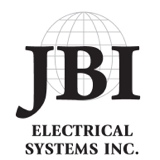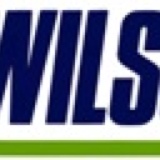Information
-
Document No.
-
Name of Employee - Employee Review
-
Employee ID#:
-
Photo of Employee:
-
Job Title:
-
Direct Supervisor:
- Anthony Beverly
- Lee Ratliff
- Scott Taylor
- James Brown
- Hugh French
- Jason Corbin
- Richard Dickinson
- Michael Wright
- James Shifflett
- Chuck Ayers
- Tom Chestnut
- Michael Dwyer
- Joseph Bailey
- Christopher Cole
- Sudip Umachigi
- Doug Tait
- Susan Tait
- Tom Manley
- Gary Berghan
-
Years and Months as Direct Supervisor:
-
Senior Reviewer:
- Anthony Beverly
- Lee Ratliff
- Scott Taylor
- James Brown
- Hugh French
- Jason Corbin
- Richard Dickinson
- Michael Wright
- James Shifflett
- Chuck Ayers
- Tom Chestnut
- Michael Dwyer
- Joseph Bailey
- Christopher Cole
- Sudip Umachigi
- Doug Tait
- Susan Tait
- Tom Manley
- Gary Berghan
-
Evaluation Justification:
-
List reason:
-
Date of Hire:
-
Prepared by:
- Anthony Beverly
- Lee Ratliff
- Scott Taylor
- James Brown
- Hugh French
- Jason Corbin
- Richard Dickinson
- Michael Wright
- James Shifflett
- Chuck Ayers
- Tom Chestnut
- Michael Dwyer
- Joseph Bailey
- Christopher Cole
- Sudip Umachigi
- Doug Tait
- Susan Tait
- Tom Manley
- Gary Berghan
-
Location (Drop pin for GPS and street address):
Attendance
-
PURPOSE OF THE PERFORMANCE EVALUATION
The Performance Evaluation is a critical measure of an employee’s performance and an important part of an employee’s ongoing professional development at W.C. SPRATT, INC. It provides a formalized mechanism for the employee and manager to discuss the nature of the employee’s job, review the employee’s performance based upon previously developed objectives/goals and to develop objectives/goals for the coming review period. -
HOW TO COMPLETE THE PERFORMANCE EVALUATION
SECTION 1: SELF EVALUATION (Employee completes Section 1)
Employee describes what was achieved during the performance period based upon previously developed goals and objectives. Employee provides a description of overall job responsibilities, objectives/goals and an assessment of results relative to those objectives/goals. Each objective/goal should meet three criteria; each should be: meaningful, measurable, and attainable.
SECTION 2: PERFORMANCE FACTORS (Manager completes Section 2)
Manager evaluates performance results based on the employee’s objectives/goals, providing specific examples of how those results were achieved.
SECTION 3: BEHAVIORAL FACTORS (Manager completes Section 3)
Manager assesses the employee’s performance results based on behavioral factors, providing specific examples supporting the rated assessment.
SECTION 4: MANAGEMENT & LEADERSHIP SKILLS (Manager completes Section 4 ONLY if employee has supervisory responsibility)
Manager evaluates the employee’s management and leadership skills, documenting specific examples supporting the rated assessment.
SECTION 5: SUMMARY/ASSESSMENT (Manager completes Section 5)
Manager summarizes the key strengths/accomplishments of the employee for the assessed performance period, indicating areas for improvement/development and recommended training/professional development for the coming performance review period. Manager determines the developmental potential of the employee and provides an overall performance assessment rating for the review period based on Sections 2, 3 and 4, if applicable.
SECTION 6: PERFORMANCE & DEVELOPMENTAL GOALS FOR THE NEXT PERFORMANCE REVIEW CYCLE (Manager completes Section 6)
Manager documents the performance and developmental objectives/goals to be achieved for the next performance review period providing the basis for evaluation during the next performance review. -
PERFORMANCE RATING DEFINITIONS
Following is a description of the performance ratings and their corresponding definitions.
Any rating other than “Meets Requirements” requires an entry in the Comments block.
Attendance
-
Attendance Record Period: (Time Considered)
SECTION 1: SELF EVALUATION (To be completed by Employee) Personal evaluation and feedback are a very important part of the employee review process. Please complete the following questions with well thought out answers.
-
1. Define your overall job responsibilities. List any specific goals, objectives, tasks or assignments you had during this period. (Add additional entries if needed). Briefly state how you accomplished these objectives/goals or why objectives/goals were not met.
-
Objective/Goal #1:
-
Objective/Goal #2:
-
Objective/Goal #3:
-
Objective/Goal #4:
-
2. List any accomplishments, awards, activities, certifications and training that you received during this past review period that you feel have added to your performance or helped you advance your career path.
-
3. How would you describe your overall performance during this past review period?
-
4. What steps could you take to improve your performance? Is there anything that your supervisor could do to help you accomplish that? What training and/or job assignment would help you progress in your career path?
SECTION 2: PERFORMANCE FACTORS (To be completed by Manager/Reviewer) Use these performance factors to assess how your employee achieved his/her results.
-
Job Knowledge: Understands the overall job function and responsibilities as well as specific tasks. Maintains sufficient knowledge of company structure, core competencies, operations and customer’s requirements and expectations (if applicable). Learns and/or applies new concepts and skills to improve/enhance performance.
- DOES NOT MEET REQUIREMENTS
- PARTIALLY MEETS REQUIREMENTS
- MEETS REQUIREMENTS
- EXCEEDS REQUIREMENTS
- GREATLY EXCEEDS REQUIREMENTS
- NOT APPLICABLE
-
Comments by Reviewer:
-
Responsibility & Dependability: Accomplishes assigned tasks in the expected time period as determined by manager. Employee demonstrates a readiness to take on additional tasks and to assume a greater level of responsibility. Employee recognizes and works to improve areas of deficiency.
- DOES NOT MEET REQUIREMENTS
- PARTIALLY MEETS REQUIREMENTS
- MEETS REQUIREMENTS
- EXCEEDS REQUIREMENTS
- GREATLY EXCEEDS REQUIREMENTS
- NOT APPLICABLE
-
Comments by Reviewer:
-
Organization: Sets and revises priorities as appropriate; Works in an organized manner. Manages time effectively to complete work; Works well under pressure and meets deadlines; Maintains an orderly work area.
- DOES NOT MEET REQUIREMENTS
- PARTIALLY MEETS REQUIREMENTS
- MEETS REQUIREMENTS
- EXCEEDS REQUIREMENTS
- GREATLY EXCEEDS REQUIREMENTS
- NOT APPLICABLE
-
Comments by Reviewer:
-
Communication: Communicates effectively with customers, superiors, subordinates, and co-workers. Writes and speaks clearly and informatively. Listens to details of instruction and gets clarification as necessary; Provides timely status updates; Maintains complete confidentiality.
- DOES NOT MEET REQUIREMENTS
- PARTIALLY MEETS REQUIREMENTS
- MEETS REQUIREMENTS
- EXCEEDS REQUIREMENTS
- GREATLY EXCEEDS REQUIREMENTS
- NOT APPLICABLE
-
Comments by Reviewer:
SECTION 3: BEHAVIORAL FACTORS Use these behavioral factors to assess how your employee achieved his/her results.
-
Exercises Appropriate Behavior: Adheres to W.C. SPRATT, INC.’ ethical standards.. Personal conduct is aligned with organizational values; models and sets example for the ethical conduct of others; upholds integrity of company in areas including government, regulatory environment, security, and time charging. Explain any incidents and appropriate performance improvement measures.
- DOES NOT MEET REQUIREMENTS
- PARTIALLY MEETS REQUIREMENTS
- MEETS REQUIREMENTS
- EXCEEDS REQUIREMENTS
- GREATLY EXCEEDS REQUIREMENTS
- NOT APPLICABLE
-
Comments by Reviewer:
-
Team Success: Works well in a team environment. Builds consensus; creates an atmosphere for cooperation over competition; makes effective use of diverse talents and experiences of the group. Supports team effort and contributes to organizational goals.<br>
-
Comments by Reviewer:
-
Maintains Customer Relationships: Employee maintains positive, courteous and cooperative interactions with internal and external customers.
- DOES NOT MEET REQUIREMENTS
- PARTIALLY MEETS REQUIREMENTS
- MEETS REQUIREMENTS
- EXCEEDS REQUIREMENTS
- GREATLY EXCEEDS REQUIREMENTS
- NOT APPLICABLE
-
Comments by Reviewer:
-
Committed to Self-Improvement: Employee continues to improve by increasing knowledge within functional area, mastering new skills and abilities.
- DOES NOT MEET REQUIREMENTS
- PARTIALLY MEETS REQUIREMENTS
- MEETS REQUIREMENTS
- EXCEEDS REQUIREMENTS
- GREATLY EXCEEDS REQUIREMENTS
- NOT APPLICABLE
-
Comments by Reviewer:
-
Adapts to Change: Shows flexibility in adapting to changes in business methods, workload and assignments; applies new technologies, processes and approaches.
- DOES NOT MEET REQUIREMENTS
- PARTIALLY MEETS REQUIREMENTS
- MEETS REQUIREMENTS
- EXCEEDS REQUIREMENTS
- GREATLY EXCEEDS REQUIREMENTS
- NOT APPLICABLE
-
Comments by Reviewer:
SECTION 4: MANAGEMENT & LEADERSHIP SKILLS (if applicable)
-
Exercises Appropriate Leadership Traits: Does the right thing and makes the tough decision vice being popular. Is trustworthy and a role model. Delegates to subordinates appropriately. Listens, thinks then acts. Exercises the highest degree of ethics.
- DOES NOT MEET REQUIREMENTS
- PARTIALLY MEETS REQUIREMENTS
- MEETS REQUIREMENTS
- EXCEEDS REQUIREMENTS
- GREATLY EXCEEDS REQUIREMENTS
- NOT APPLICABLE
-
Comments by Reviewer:
-
Provides Direction: Leads and influences others by positive example; makes expectations clear; focuses on bigger picture while implementing details. Anticipates issues and risks and is proactive.
- DOES NOT MEET REQUIREMENTS
- PARTIALLY MEETS REQUIREMENTS
- MEETS REQUIREMENTS
- EXCEEDS REQUIREMENTS
- GREATLY EXCEEDS REQUIREMENTS
- NOT APPLICABLE
-
Comments by Reviewer:
-
Develops Subordinates: Treats employees at all levels fairly, equally and with respect. Delegates appropriately. Allows employees to make mistakes. Encourages self-improvement and provides growth opportunities; provides objective appraisals and timely employee feedback, both positive and constructive.
- DOES NOT MEET REQUIREMENTS
- PARTIALLY MEETS REQUIREMENTS
- MEETS REQUIREMENTS
- EXCEEDS REQUIREMENTS
- GREATLY EXCEEDS REQUIREMENTS
- NOT APPLICABLE
-
Comments by Reviewer:
-
Develops Business: Actively promotes company capabilities and assists with the development of new business for the company (if applicable). Works across the company to assist other BU’s in growing business.
- DOES NOT MEET REQUIREMENTS
- PARTIALLY MEETS REQUIREMENTS
- MEETS REQUIREMENTS
- EXCEEDS REQUIREMENTS
- GREATLY EXCEEDS REQUIREMENTS
- NOT APPLICABLE
-
Comments by Reviewer:
-
Manages Programs/Projects: Plans, organizes, staffs, controls and directs appropriately. Analyzes effectiveness of programs. Effectively allocates and prioritizes projects and resources. Delegates as appropriate. Understands financial data and manages accordingly.
- DOES NOT MEET REQUIREMENTS
- PARTIALLY MEETS REQUIREMENTS
- MEETS REQUIREMENTS
- EXCEEDS REQUIREMENTS
- GREATLY EXCEEDS REQUIREMENTS
- NOT APPLICABLE
-
Comments by Reviewer:
SECTION 5: SUMMARY/ASSESSMENT (Completed by Manager/Reviewer) Key Strengths &/or Accomplishments During Performance Review Period
-
1.
-
2.
-
3.
-
Click to Add More:
Areas for Improvement &/or Development During Next Performance Review Period
-
Comments by Reviewer:
-
Click to Add More:
Recommended Training and Development During Next Performance Review Period
-
Developmental Potential: Comment on how/where the employee would be best used for his/her own personal development and value to W.C. SPRATT, INC. (e.g., as individual contributor, technical expert, SME, leadership, different position, etc.)
-
OVERALL RATING ASSESSMENT FOR PERFORMANCE REVIEW PERIOD
- DOES NOT MEET REQUIREMENTS
- PARTIALLY MEETS REQUIREMENTS
- MEETS REQUIREMENTS
- EXCEEDS REQUIREMENTS
- GREATLY EXCEEDS REQUIREMENTS
- NOT APPLICABLE
SECTION 6: JOB DESCRIPTION & PERFORMANCE GOALS FOR NEXT YEAR’S REVIEW Jointly agree upon next year’s job and up to four Goals/Objectives. These may be changed throughout the coming year after periodic performance reviews with you and your supervisor. Note: These Objectives/Goals should transfer to Section 1 for next year’s rating.
-
1. Define your job. List specific goals, objectives, tasks &/or assignments you have during the coming evaluation period.
-
Objective/Goal #1:
-
Objective/Goal #2:
-
Objective/Goal #3:
-
Objective/Goal #4:
ACKNOWLEDGEMENTS
-
Do You Agree or Disagree?
- I acknowledge that I have read, understand and agree with this Performance Evaluation
- I acknowledge that I have read this Performance Evaluation, but I disagree with it.
-
EMPLOYEE COMMENTS:
SIGNATURES
-
Signature of Employee
-
Signature of Manager/Reviewer
-
Signature of Senior Reviewer











